Vital Signs: Assessment and Interpretation Importance ... - TMedWeb
Vital Signs: Assessment and Interpretation Importance ... - TMedWeb
Vital Signs: Assessment and Interpretation Importance ... - TMedWeb
Create successful ePaper yourself
Turn your PDF publications into a flip-book with our unique Google optimized e-Paper software.
9/8/2011Pitfalls• Cuff too big: artificially low BP• Cuff too small: artificially high BP• Old age <strong>and</strong> stiff blood vessels: requireshigher pressure to occlude flow, givingartifically high BP• Auscultatory Gap- transient loss of sound ascuff is deflated. Be sure to deflate cuff all theway to zero. Always palpate BP first.Putting it all together• The vital signs should be viewed as agroup, because this method gives usthe most information to form adifferential diagnosis.Let’s see if you can determine the causesof the following patients’ vital signmeasurements:Pulse Oximetry• Measures oxygen saturation throughthe use of a transcutaneous deviceattached to the finger or earlobe• Uses photodiode to measure absorptionof light/infrared by blood• Normal pulse oximetry measurementsat room air: 98-100%T 99 P 126 R 24 BP 100/60Pulse Ox 90% RA ; Pain 0/10This 49 year old patient is complaining ofshortness of breath after a surgicalprocedure. She is a not smoker <strong>and</strong> hasnot been able to get out of bed forthree days due to the surgery. She hasnever had any lung problems.Pain Index (on a 0-10 scale)• Makes sure that physicians address painissues• Allows us to quantify pain over time <strong>and</strong>in response to treatment• Often will use face scale3



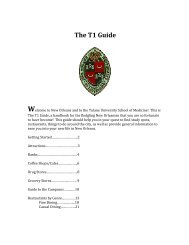
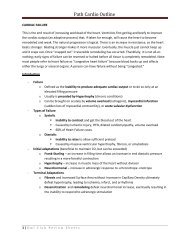
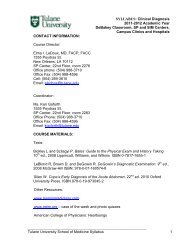
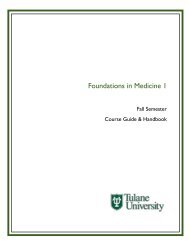


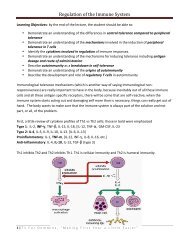

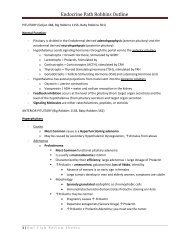



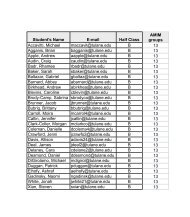
![Research Opportunities for Medical Students 10-13[1] - TMedWeb](https://img.yumpu.com/35158682/1/190x245/research-opportunities-for-medical-students-10-131-tmedweb.jpg?quality=85)